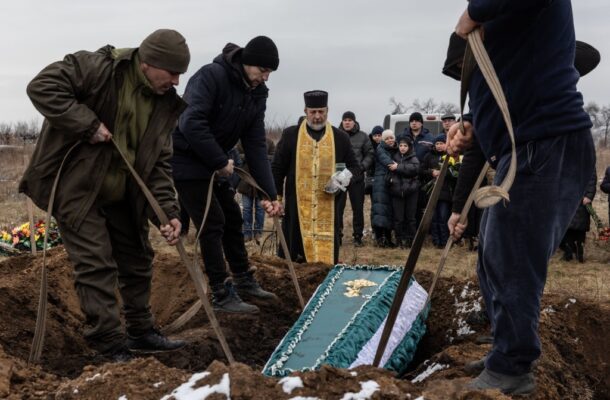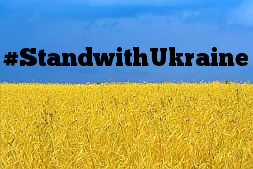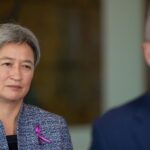Helping Ukraine to help ourselves

Australians should take pride in our prompt and generous response to Russia’s all-out invasion of Ukraine in February 2022. Australia’s ongoing assistance to Ukraine, which is approaching one billion dollars, mostly in the form of military materiel and training, reflects enlightened self-interest as well as national resolve to help a fellow democracy repel flagrant and illegal aggression.
Anything less than failure for Putin in Ukraine would have serious implications for Australian interests and security. Beyond the consequences for Europe, it would signal that liberal democracies lack staying power, emboldening other autocrats with growing military capabilities and a disruptive agenda, including Xi Jinping and Kim Jong Un in our region.
The Australian government seems to appreciate the stakes. As Deputy Prime Minister and Defence Minister Richard Marles aptly put it, ‘We stand with Ukraine in support of its courageous people and also in defence of a fundamental principle—the right of every sovereign nation to be secure in its own borders and to determine its own future.’ In other words, what happens in Ukraine resonates around the world.
However, despite ministers’ firm rhetoric and ongoing pledges, there are signs that assistance for Ukraine is slipping as a political priority in Australia. Prime Minister Anthony Albanese has stopped claiming that Australia is the most generous non-NATO donor to Ukraine. Albanese’s initial hesitation in confirming his attendance at the 2023 NATO Summit in Vilnius also sent a confused message. A downward trend in Australian assistance would run counter to the national interest and jar with public sentiment favouring greater support for Ukraine.
Australia’s assistance to Ukraine should reflect its objectives. Defence says that Australia aims, along with its partners, to ‘empower Ukraine to resolve the conflict on its own terms’, while ‘noting Defence’s primary focus on the Indo-Pacific region’. While these goals may seem in tension, they are in fact complementary.
For Kyiv, resolving this conflict on its own terms means expelling Russia from all Ukrainian territory. While that may seem difficult to envisage at this point, many credible analysts, including Jack Watling at the UK Royal United Services Institute (RUSI), assess that Ukraine could achieve sufficient leverage from military success on the battlefield to impose a lasting peace, but only if liberal democracies stand together and increase military assistance to Ukraine.
Whatever we may hear from presidential candidates and Congress ahead of a US election, Watling argues persuasively that Russian success in Ukraine would likely necessitate greater US commitment to deterrence in Europe, diminishing its resources to deter Beijing and Pyongyang. Avoiding this outcome supports the already compelling logic for increasing Australian assistance to Ukraine, and complements Defence’s objectives in the Indo-Pacific.
It’s also important that Kyiv receives sufficient assistance to end this conflict on its terms as quickly and efficiently as possible. Providing only enough support to keep Russia bogged down in Ukraine is neither morally nor strategically sound. It is essential for Australia that the US can refocus its considerable policy and military might towards the Indo-Pacific as we face what President Joe Biden has aptly referred to as a ‘decisive decade’. That US pivot—already deferred twice by the post-9/11 war on terror and the 2008 global financial crisis—cannot be achieved cleanly while Putin’s expansionary delusions remain buttressed by territorial gains in Ukraine.
Australia’s transfer of military materiel, its ongoing training of Ukrainian soldiers in the UK through the extension and expansion of Operation Kudu, and the ADF deployment of an RAAF E-7A Wedgetail early warning aircraft to Germany are all making a difference to outcomes in Ukraine. But some forms of assistance are being refused or held up in Canberra.
We acknowledge Marles’ explanations to Parliament for not providing some forms of materiel to Ukraine, including Hawkei vehicles and the F/A-18 ‘classic’ Hornet aircraft, citing a combination of factors including safety, and issues with sustainment and readiness. A similar debate is playing out with MRH-90 Taipan helicopters, which will be retired from service and buried due to safety concerns, rather than sent to Ukraine.
These might be sound reasons for refusing to transfer military materiel in normal circumstances, but war warrants a different approach to risk. Ukrainian officials should be fully appraised of any risk assessment from the Australian Government and Defence specifically, but if the goal is to empower Ukraine to win on its own terms, then surely the decision on accepting capability in less than pristine operational condition is one for Ukraine. Its soldiers have proven time and again what they can do with kit that is not what we would consider fit for purpose.
It’s good that Parliament is scrutinising the government’s policy on assistance to Ukraine, including as the first item of an ongoing inquiry into Defence’s annual report by the Joint Standing Committee on Foreign Affairs, Defence and Trade.
In our submission to the parliamentary inquiry, we encourage Defence to adopt a more forward leaning stance towards future Ukrainian requests for materiel, especially where capabilities are retired from service or are surplus to ADF requirements.
We recommend that Defence, working with the Ukrainian authorities, reviews all capabilities that are close to retirement or retired, as well as capabilities being produced by Australian defence industry, which may be suited to assisting Ukraine. This review should be conducted with a particular eye on low-cost capabilities that might have an asymmetric effect, such as the Precision Payload Distribution System (PPDS), more famously known as the ‘cardboard drone’, produced by Melbourne-based Sypaq Systems.
Such a review could have positive carryover to the changes the government plans to make to Australia’s own national defence. These include streamlining procurement, getting capabilities into the hands of warfighters early and refining them in the field, and seeking asymmetric advantages in both Australia’s partnerships and homegrown pool of innovative talent. We hope that the Defence Industry Development Strategy, the National Defence Strategy, and other plans that are expected to be published in the coming months will make progress towards these goals.
Setting Ukraine in a global context, Australia must become an important part of an emerging collective arsenal for democracy. This means deepening research and industrial collaborations with trusted partners, including through AUKUS. Given Europe’s demand for quality and dependable supplies of arms, investments in Australia by key foreign partners, like Hanwha’s establishment of armoured vehicle manufacturing in Victoria, should also be encouraged.
To recall Margaret Thatcher’s choice turn of phrase to George H.W. Bush when confronting Saddam Hussein’s flagrant aggression against Kuwait in 1990, this is no time to go wobbly. Ukraine can resolve the war on its terms, and it’s essential for Australian interests and the security of our region that it does. Australian assistance—military, financial and diplomatic—is making a difference, but we must help stiffen our spines, and those of our friends and allies, by doing more.
This article was written by Bec Shrimpton, Alex Bristow and Malcolm Davis and published by The Strategist.
Bec Shrimpton has over 20 years’ experience in policy, operational and corporate roles in the Australian Department of Defence and in the Department of Foreign Affairs and Trade. She is a Director at the Australian Strategic Policy Institute, and convenes The Sydney Dialogue, a policy summit for critical, emerging, cyber and space technology.












